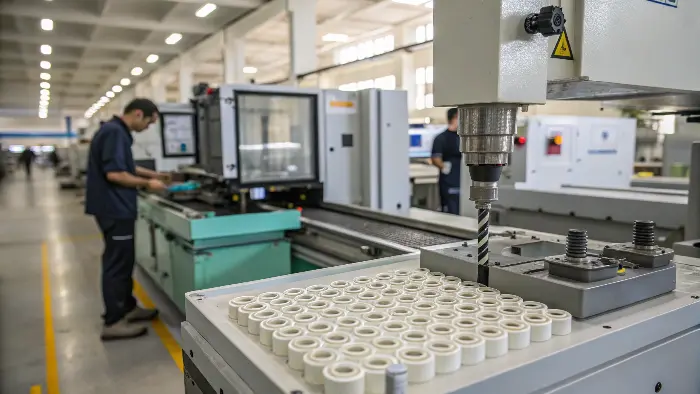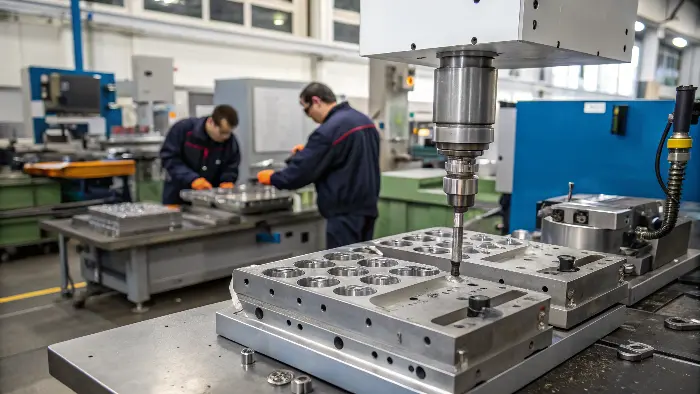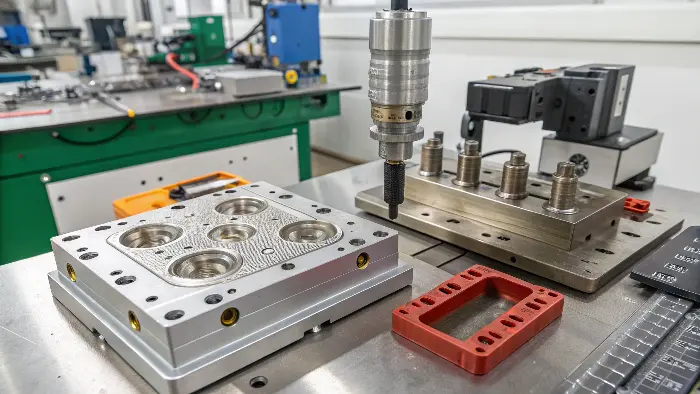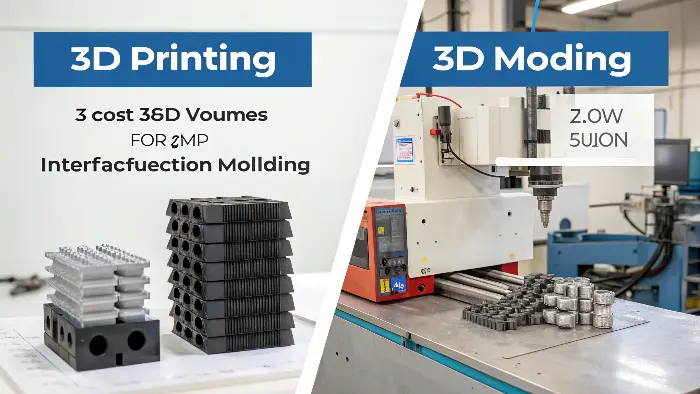You’re looking at thin wall injection molding, but the initial tooling costs seem huge. It’s a big investment, and you’re worried about the ROI. Making the wrong choice could mean blowing your budget on a mold that doesn’t deliver the speed or material savings you hoped for. But what if you could see beyond the upfront price tag and understand the long-term value?
Yes, thin wall injection molding is absolutely worth it for high-volume production. The higher initial mold cost is offset by significant long-term savings from faster cycle times, lower material usage per part, and reduced shipping costs. This leads to a much lower cost-per-part, delivering incredible value and a strong return on investment for the right projects. It’s a classic case of spending more now to save a ton later.

I get it, that initial quote for a high-precision mold can be a real shocker. I’ve seen project managers like you, Alex, stare at a number with five or six figures and just freeze. It’s a lot of money to commit. But the thing is, the price tag on the mold is only one part of the story, and honestly, it’s not even the most important part. The real story is about total cost and total value. To really understand the value, we first need to tackle a big question I hear all the time…
Why do injection molds cost so much?
You get a quote for an injection mold and the price is in the thousands, or even tens of thousands. You might be thinking, "Is this a typo?" This high cost can stall projects and make it hard to get budget approval. You start questioning if there’s a cheaper way, even if it’s not the best way. So, let’s pull back the curtain. I’ll explain exactly what goes into that price.
Injection molds are expensive due to the high-precision engineering, durable materials, and complex manufacturing processes involved. They are custom-made tools built from hardened steel, requiring skilled labor and advanced CNC machinery to create intricate cavities that can withstand immense pressure and heat for millions of cycles. The cost reflects the quality and longevity required for mass production.

When you’re paying for a mold, you’re not just buying a chunk of metal. You’re buying a piece of high-performance industrial equipment, custom-built for one job: making your part perfectly, millions of times. I remember a project for a medical device housing—the complexity was mind-boggling, but seeing it produce perfect parts every 15 seconds made the upfront engineering totally worth it for the client.
Here’s a breakdown of where the money goes:
The Steel Itself is a Major Factor
We don’t just use any steel. We use special, hardened tool steels like P20, H13, or S136. Why? Because an injection mold has to survive incredible forces. We’re talking thousands of tons of clamping pressure and molten plastic being shot in at high speed. Softer steel would wear out or even break. Hardened steel costs more, but it’s the only way to guarantee the mold will last for a million-shot run.
The Magic of Precision Machining
This is where the real art is. We use computer numerical control (CNC) machines and Electrical Discharge Machining (EDM) to carve the steel. These machines are incredibly precise—we’re talking about tolerances smaller than a human hair. This process takes time. A complex cavity can take hundreds of hours of machine time to get just right. That’s a lot of skilled labor and expensive machine hours.
It’s All in the Complexity
Not all molds are created equal. A simple mold for a bottle cap is one thing. A complex mold for a consumer electronics housing with clips, vents, and screw bosses is a whole different beast. The more complex the part, the more complex—and expensive—the mold.
| Feature | Simple Mold (e.g., a cap) | Complex Mold (e.g., electronics housing) |
|---|---|---|
| Cavities | 1-4 | 8-32+ |
| Actions/Slides | None | Multiple for undercuts |
| Cooling System | Basic channels | Conformal cooling |
| Ejection System | Simple pins | Lifters, stripper plates |
| Estimated Cost | $ | $$$$ |
What is the most important consideration when estimating the cost of injection molding tooling?
Okay, so you need to budget for a new mold, but the variables seem endless. How can you get an accurate estimate without getting lost in the details? A bad estimate can lead to project delays or going over budget, which puts your job on the line. I’ll tell you the single most important factor that drives mold cost. Focusing on this one thing will make your estimates much more accurate.
The most important consideration when estimating injection mold tooling cost is part complexity. This includes the part’s size, geometry, surface finish requirements, and the number of undercuts or threads. A more complex part requires a more intricate mold with features like side-actions, lifters, and advanced cooling systems, which directly increases the machining time, materials, and labor needed to build it.

I always tell my clients, "Show me the part, and I can give you a good idea of the cost." It all comes back to the design of the plastic part itself. Everything else—the type of steel, the number of cavities—is influenced by the part’s complexity. Let’s dive a little deeper into what "complexity" really means in our world.
Undercuts and Side-Actions: The Cost Multipliers
This is a big one. An undercut is any feature that prevents the part from being ejected straight out of the mold. Think of a snap-fit clip on the side of a battery cover. To create that feature, the mold needs moving parts called slides or lifters. Think of it like this: a simple mold opens and closes in one direction, up and down. A mold with side-actions has parts moving sideways before it can open. It’s a mechanical puzzle, and building that puzzle—and making sure it works for a million cycles—takes serious skill and adds significant cost.
Don’t Forget the Finish!
The required surface finish of your part has a huge impact on cost. A standard, non-cosmetic finish (like you’d see on an internal part) is straightforward. But what if you need a high-gloss, mirror-like finish for a consumer product? That requires hours and hours of a skilled technician manually polishing the steel mold cavity by hand. This is pure labor cost, and it can add thousands to the final price.
Material Choice Matters Too
The type of plastic you plan to use also plays a role. Some plastics, especially those with glass fibers mixed in for strength (like Glass-Filled Nylon), are very abrasive. They act like sandpaper on the mold steel over time. For these materials, we have to use an even harder, more expensive grade of steel (like H13) to ensure the mold doesn’t wear out prematurely. This increases the upfront material cost of the tool.
What are the advantages of injection molding in terms of production cost and design flexibility?
So you’ve accepted the high upfront cost of the mold. Now you need to convince your team—and maybe yourself—that it’s the right long-term play. Without a clear understanding of the benefits, the project might seem too risky, and you could be pushed toward slower, more expensive per-part methods. Let’s focus on the payoff. I’ll show you how that initial investment unlocks massive advantages.
The primary advantage of injection molding is its incredibly low cost-per-part at high volumes. Once the mold is made, you can produce thousands or millions of identical parts very quickly. This speed and repeatability are unmatched. In terms of design, it offers flexibility with complex geometries, a wide range of material choices, colors, and surface finishes, all within a single production process.

This is where the cost-benefit analysis really starts to shine. That scary mold price? It’s an investment in a manufacturing machine that will churn out cheap parts for years. It’s all about achieving economy of scale.
The Power of Scale: Driving Down Per-Part Cost
Let’s look at some simple math. Imagine your mold costs $10,000 and your material cost per part is $0.50.
| Number of Parts | Tooling Cost | Material Cost (per part) | Total Cost per Part |
|---|---|---|---|
| 1,000 | $10,000 | $0.50 | $10.50 |
| 10,000 | $10,000 | $0.50 | $1.50 |
| 100,000 | $10,000 | $0.50 | $0.60 |
| 1,000,000 | $10,000 | $0.50 | $0.51 |
As you can see, the huge tooling cost gets spread out, or "amortized," over the production run. At a million parts, the mold cost is just a penny per part! That’s the magic. Your per-part cost plummets, making it the most affordable way to produce plastic parts in large quantities.
Design Freedom (With a Few Rules)
Injection molding gives you incredible design freedom. You can mold in features like screw bosses, strengthening ribs, and living hinges directly into the part, eliminating assembly steps later on. You can even do overmolding, where we combine a hard plastic with a soft, rubber-like material (TPE) in the same part—think of a power tool handle with a soft grip.
And this is where thin wall injection molding, the main topic today, really comes into its own. By designing parts with very thin walls (often less than 1mm), we can achieve several amazing things at once:
- Use less plastic: This directly lowers your material cost per part.
- Faster cycle times: Thinner parts cool down much faster in the mold, meaning we can run the machine faster and produce more parts per hour.
- Lower shipping costs: Lighter parts cost less to transport.
It’s a trifecta of savings, and it’s a perfect example of how smart design, combined with a high-quality mold, delivers massive value.
How much does injection molding cost compared to 3D printing?
You’ve got a new part design. The boss asks, "Should we 3D print this or make a mold?" It’s a classic question, and you need a clear answer, fast. Choosing the wrong process can be a costly mistake. 3D printing might be too slow for production, while molding might be total overkill for a prototype. Let’s settle this debate.
3D printing is cheaper for very low volumes (1-100 parts) because there’s no tooling cost; you just pay per part. Injection molding is far more cost-effective for mass production (1,000+ parts). While molding has a high initial tooling cost, its per-part cost is extremely low. The break-even point where molding becomes cheaper is typically in the low thousands of units.

I always tell my clients to think about the "break-even point." It’s the magic number of parts where the total cost of molding (tooling + parts) becomes less than the total cost of 3D printing all those parts.
Just last month, a client came to us. He was 3D printing a small enclosure. It cost him $15 per part. He needed 5,000 of them for his first production run. That’s a total of $75,000! We built him a production mold for $8,000, and his part cost dropped to just $0.70. His total cost for the 5,000 parts? $8,000 (mold) + $3,500 (parts) = $11,500. He saved over $60,000 on his first run alone. That’s the power of choosing the right process at the right time.
A Tale of Two Processes
Here’s a simple way to look at it:
| Factor | 3D Printing (FDM/SLA) | Injection Molding |
|---|---|---|
| Upfront Cost | Very Low ($0) | Very High ($5k – $50k+) |
| Cost per Part | High & Fixed | Very Low (decreases with volume) |
| Speed | Slow (hours per part) | Fast (seconds per part) |
| Best for… | Prototypes, custom parts, <500 units | Mass production, >1,000 units |
| Material Options | Good, but can be limited/expensive | Huge range of production-grade plastics |
| Part Quality | Good, but layer lines visible | Excellent, consistent, strong |
So, what’s the verdict? Use 3D printing for your early-stage prototypes. It’s fast and cheap for one-offs. Test your design, make changes, and print it again. But once your design is locked in and you need to make hundreds, or—more likely—thousands of parts, it’s time to invest in a mold. It’s the only way to scale up affordably.
Conclusion
The high upfront cost of a quality mold, especially for thin-wall applications, is an investment in efficiency. This investment pays for itself through dramatically lower per-part costs, faster production cycles, and greater design freedom. It’s about looking at the total cost of ownership, not just the initial price. At CavityMold, we help you make that smart investment.
